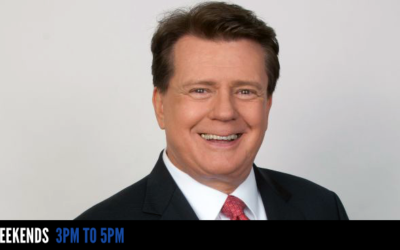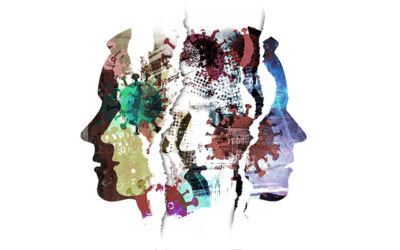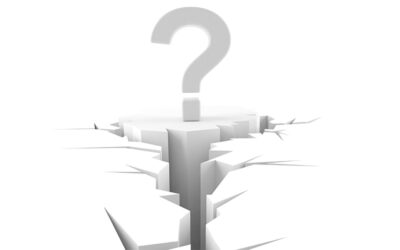As most of us know, we Americans are a mess—overworked, overweight, and stressed out. In addition to the increased demands of our technologically fueled lives and their damaging effects on our wellbeing, we have a health care system in free fall. In one generation we have seen a shift from low cost, comprehensive coverage to $3000 deductibles, low quality HMOs and escalating numbers of people without any insurance at all. Altogether, these developments have damaged health care outcomes and changed the trust relationships between patients, doctors, employers, and health insurance carriers.
People who have the most health care dollars to spend largely determine the direction of the health care market. And where this money is spent is largely a function of the beliefs of these health care consumers. Over the past century, allopathic, or western medicine, has claimed this mantle of belief based upon its surgical and pharmaceutical power. Indeed, if a bone is broken, an infection raging, or an appendix bursting, an MD is the person to consult. But the belief that allopathic medicine can cure all medical problems has not been borne out.
As long as allopathic medicine had minimal competition from other professions, patients had little choice but to submit to the powerful yet limited diagnoses and treatments of their MDs. However, as more alternative methods become understood and available, the situation is changing. A 1993 study in the New England Journal of Medicine (and updated in 2003) revealed that, in the US, over thirteen billion dollars per year was spent on complementary, or alternative, medicine. These therapies ranged from spinal manipulation and acupuncture to energy healing and massage therapy. Of this amount, over ten billion was spent out of pocket. That compares to approximately thirteen billion spent out of pocket for conventional medical treatment during the same period. The study also showed that few patients—only 28%–told their family doctors about their alternative treatments. These numbers reflect a wide gap between allopathic and complementary medicine, both in theory and practice.
One reason for this gap is that the two philosophies of health and healing differ so dramatically. According to complementary medicine, health is defined as a state of wellbeing, an energetic balance of mind, body, and spirit. It is not, as generally described in allopathy, simply the absence of disease. Complementary medicine holds that the cumulative effects of the stresses of life–mechanical, chemical, and emotional—cause imbalance, which in turn, create illness, or dis-ease. Treatment is focused on restoring balance rather than the allopathic approach of attacking symptoms.
Allopathic medicine claims its practice is more legitimate than complementary medicine because it is based in science. This suggests that allopathic diagnoses and treatments have all been subjected to the rigors of laboratory testing and scientific methodology. While this assertion is subject to argument, it is true that the power wielded by the medical establishment has allowed it to conduct more extensive research than we have seen in the complementary medical fields. This has enabled proponents of allopathic medicine to dismiss complementary medicine as unscientific.
But patients have discovered that there are many conditions for which allopathy has little to offer and which respond positively to complementary care. Chronic digestive and respiratory disorders, back pain, allergies, and headaches are often more responsive to Chinese medicine, chiropractic, or nutritional counseling than to drugs and/or surgery, frequently at lower cost, and almost always with fewer side effects. Still, patients sense that their primary MD’s don’t trust alternative medicine, ridicule it, or feel undermined by it, and so feel reluctant to bring it up, even though it is in the best interest of their health to do so.
Despite the gap in philosophies and resistance by the medical establishment, complementary medicine is moving from the fringes toward the center of an evolving medical paradigm. Driven by the proliferation of available information and the economics of patient demand, its worldview has infused and is slowly altering that of allopathic medicine. Health insurance companies have been compelled to offer alternative services to their members. Advertisements for large medical centers promote wellness and prevention, healthy diet and exercise–all ideas that have emerged from complementary medicine. We even hear definitions of health broadened, beyond the individual, to the environment, that a healthy body requires a healthy world so we must preserve and protect the environment of which we are all integral parts.
Based on a deep understanding of the philosophy of complementary and alternative medicine, more and more practitioners, including MDs, are creating innovative models that integrate technology and truly comprehensive practitioner networks, a holistic view of the body and the realities of the post-industrial workplace. With these models, patients, providers, employers, and insurers can together more effectively navigate the health care landscape of our twenty first century world.
Dr. Ricky Fishman has been a San Francisco based Chiropractor since 1986. In addition to the treatment and prevention of back pain and other musculoskeletal injuries, he works as a consultant in the field of health and wellness with companies dedicated to the re-visioning of health care for the 21st century.
Copyright Ricky Fishman 2011
[email protected] www.rickyfishman.com












Hey Ricky, that was great. I think even allopathic medicine is beginning to note the failings of the scientific model. Double blinded, controlled trials are a good way to figure out if a chemical/medication does what is claimed. On the other hand, not so good a way to figure out what’s wrong with someone and how to improve their health. Instead of moving down a diagnostic algorithm eliminating all the things that are “not important” identifying the “cause” of a symptom or illness, a systems biology model is much more effective. It takes into consideration all the factors, so it is an inclusive model that virtually studies the biologic terrain of an individual. Keeping in mind we are not solid and are all vibrating particles of light, everything affects everything. There is no “ruling” out whether stress is a potential trigger for ulcerative colitis.
I had a patient come see me with a UC diagnosis. On an antidiarrheal, 900 mg of iron a day ! because he was bleeding from his ulcerative intestines and colon, on a chemotherapeutic agent that knocked his white blood cells almost to zero, leaving him defenseless against infection, and cancer, and since he’d had the condition 10 years, they were advising him, he would probably have to have his colon removed. A young man, underweight, who could not go out in the sun because of the reaction from the chemotherapeutic meds. His body, his face, were distorted by prednisone use. He was told by his gastroenterologist, that stress could not be a factor or a trigger. He was basically housebound, and couldn’t eat almost anything because of the abdominal cramping and pain, and having to run to the bathroom. I did a work-up, some tests, went over things with him, and if you look at IBS, Chron’s, UC, not one is an actual disease with a causative factor. The Institute for Functional Medicine model of treating this, is to look at gut ecology, test for yeast bacterial imbalance, gut barrier integrity, bad bugs like entomeoba histolytica, or giardia, or very high e coli, and allergens like gluten, and dairy, look at stressors, vitamin D levels etc.
I took him off of gluten and dairy, and in three days his cramping was reduced 50%, he went of the antidiarrheal, and now three months later, after using an anti-inflammatory medical food aimed at improving barrier integrity, and nutrient absorption, probiotics, and digestive enzymes, he took himself off the chemotherapeutic agent which had never made any difference in his condition, but his GI doc wanted him to stay on the rest of his life. He weaned himself off the prednisone. He’s gained 8 lbs, is eating more widely and is about to get a new colonoscopy done. He expects he’ll be absent ulcers. He is decreasing his iron intake, to avoid hemachromatosis, because he no longer has bloody stools. He has suffered needlessly for 10 years and run the risk of developing colon cancer, based on allopathic treatment. Standard treatment. What I hear from my alternative medicine colleagues is that UC etc, takes the perfect storm to develop. Could be a protozoan infection, an imbalance, AND, usually some huge emotional/stress related crisis, along with a genetic propensity that finally pushes the body over the edge. Then the pancreas shuts down enzyme production, and malabsorption results. BUT, we can come back from the edge.
I find it interesting and important, that people spend as much out of pocket for alternative kinds of care as they do on covered medical care. I think they waste a lot of money on what insurances cover. How many patients do we know on 10 meds? more than 4 cause new problems to take more meds to cure.
Ricky, as usual, you rock.
Frustrated at times with traditional Western medicine, I inquired about herbal supplements during a recent visit to my doctor – general practitioner. He replied, “You can try what you like, but I think that you are wasting your money. Where are the studies to back up the evidence that these supplements work?” So, I went ahead and spent my money. I will keep buying the supplements because I feel stronger. Here on the East Coast we can listen to Dr. Allen Pressman and Jerry Hicky of InVite Health. Their information and view point concur with your blog, Ricky! Thanks for your thoughts. Debbie Benjamin
Hi Ricky…
As on many past occasions I’ve enjoyed reading your piece. This is one of several that discuss the relationship between allopathic and CAM. Your running theme of MDs dominating health care and its industry, for better or worse, is generally well taken. Allow me to advance a rationale for this reality which I’ve not seen entertained in your musings.
While many of us have come to appreciate CAM practioners and their contribution to patient well being, we remain the identifiable responsible individuals in the process. As in any organization, leadership is necessary. To do otherwise would allow for more chaos than already exists. For MDs to allow for the CAM multiply credentialled community to expand their scopes of practice without oversite or documented evidence of efficacy (science, for lack of a better word) is to deny our responsibility to patients, as well as the time honored tradition of leadership of the many by the trained few.
We all have our roles to play, and all the world’s a stage…
Paul
Thanks so much for your comment Paul. As you know, I enjoy working in an integrative setting with Medical Doctors like yourself as well as NP’s, Acupuncturists, and other practitioners. And I believe strongly in the value of what MD’s bring to the table. With a bullet in my shoulder or a bursting appendix I am heading straight to the ER. I also appreciate that when a patient comes into our clinic in full back spasm, I am all for a shot of toradol and some muscle relaxers to break the cycle of spasm and pain so i can then get in to do my manipulative therapy. Thus the integrative approach.
However, my argument in the blog piece is that there are conditions for which I, as a primary provider, fully licensed under the laws of California and fully trained to differentially diagnose, would more effectively be the “identifiable responsible individual” in certain situations. I cannot tell you how many times I have seen patients who have been to their MDs with acute back pain who were told to put heat on their backs, to do knee to chest stretches (when extension exercises are needed), and stay in bed. And in addition, advised not to see a chiropractor when the patient asks about it! With back pain being one of the primary reasons that patients show up in their doctors offices, I would posit that the MD is not the one who should be responsible as the majority are not adequately trained in this area.
As doctors I believe it is essential that we know what we can do and as important to know what we cannot do. There is room in the arena of health care for different providers to take on the role of primary depending upon the particular condition of the patient. I believe strongly that if someone has back pain, that I should be the first person that the patient sees. I will know if a referral is necessary to an MD. If an anti-inflammatory, muscle relaxer, or pain killer is necessary, I can steer them to their MD to get that. Generally a phone call is all that is needed in that case. I will know if imaging is needed. When the person with back pain needs treatment for their condition, they will receive more comprehensive care on a visit to me than to their medical doctor.
The idea of the MD being the “responsible party” is rooted in the history of MDs being in control of health care delivery over this past century. Letting go of power is always a challenge, but in the interest of the patients health, I think all of us providers should responsibly share that power.
Thanks again Paul. I really appreciate your thoughts and the care you have taken to read my pieces and of course enjoy working with you in the integrative setting of EOMC.
Ricky, despite my flip, if not arrogant comment above, I couldn’t agree with you more. I don’t think there is not a primary care or orthopedic MD whose life would not be happier without seeing one more neck or back complaint. Shared, nay obviated, responsibility would be lovely.
But as you say, current control is rooted in the health care culture of the last century. It is what it is. It will take monumental effort for chiropractic and other CAM practitioners to produce a contemporarily acceptable series of studies just to get a foot in the door, let alone achieve a shared lead for the care of back pain folks orienting to allopathic physicians for all manner of complaints.
As those studies are forthcoming, for better or worse, practice, referral patterns, and patient orientation will change. There’s plenty of pathology to go around. Now…if the orthopedists could just give it up a little…
Paul
Just a thought on primary care for spinal pain. As a graduate of UC San Francisco, I can tell you that I do not recall one lecture on back pain. At most, we may have had 30 minutes or 60 minutes. The focus was, “we can’t make a diagnosis in 85% of patients (based on an MD expert panel convened in 1980 using data from the 1950s and 1960s). Next came, the classic herniated disc, a few fractures and maybe a few surgical options. Not very helpful!!! Especially for primary care doctors. Pain is the second most common reason patients visit their MD (typically back, knee or shoulder pain). The musculoskeletal education in medical schools is poor at best. Some are better than others if they have a Physical Medicine and Rehabilitation Dept. If the Orthopedic Dept or Neurology Dept is in charge — a completely different viewpoint is put forth, as we are all guilty of seeing the problem thru the lens of our training.. Most medical schools require a 2-4 week rotation with orthopedics, most of that time is inpatient. I spent 2 weeks doing inpatient orthopedics and never saw a patient with back pain until i did a residency in Physical Medicine and Rehab. Only medical residents pursuing orthopedics do more outpatient clinic time — if they are inpatient they will see microdisectomies, fusions & know that sometimes people get steroid shots. I agree that chiropractic is a much more effective first line referral. Often a partnering with a like minded MD is needed if pain control is needed and hard to achieve. But most people, 90% get better without an MD. The DC can also refer the patient to PT. If any red flags appear, a referral can be made to an MD. If the patient has terrible sciatica and weakness and MD can see them and decide about the pros and cons of a steroid injection — or acupuncture. The research on steroid injections shows that it can markedly help pain, esp leg pain, but it still takes at least 6-12 weeks to recover. There are also real considerations to talk about with patients about the pros and cons of steroid injections — they are not benign. One steroid injection will depress the HPA (hypothalamus-pituitary-adrenal axis) for 4-12 weeks. I started noticing that after a steroid shot, especially in winter, my patients would get a bad bronchitis case, shingles or some manifestation of a weakened immune system. There are also alternative injection treatments which dont have all the negative effective of steroids to consider. The bottom line is that family practice and internal medicine docs are not typically prepared for the amount of pain and musculoskeletal problems they are going to see. They are perhaps taught physical exams for common joint problems a few times, but their musculoskeletal skill set is generally weak. Many medical schools are trying to address this education gap.. One reason many primary care docs dislike treating these patients is they have little to offer and may mistrust DC. Many just send straight out to PT.
Chiropractors became “back” doctors when HMOs and managed care entered the scene. It’s sad since the message of chiropractic was always about the body’s innate ability to heal given the right support and removal of interferences of all kinds, including subluxations, but especially chemical and other. For some of those early docs (by that I mean early into managed care) the back pain market was lucrative and so they pursued it and eventually the MDs and DOs and spine surgeons did too…..not to mention massage therapists and copper bracelet wearers and pharmaceutical companies, and so on. Now that a majority of the public’s mind is set on “back pain” as the chiropractors’ domain, the leading edge practitioners of it are backing out, as it were, because that was never the philosophy nor the principles taught in school. Nor the belief that brought them to the teachings in the first place. I for one am grateful for this change.
Hello wellgirl01,
Thanks for the comment although I am not sure exactly what you are grateful for in the end. Is it that DC’s are primarily identified as “back doctors” because the MD’s and DO’s have backed out. For myself, as a chiropractor, I am happy to be a back doctor and deal mainly with musculoskeletal problems. I know that in the past many chiropractors have dealt with organic problems via spinal manipulation (and there are many who still do) but I find that for deeper internal problems (as long as we have ruled out frank pathology) I prefer to refer those patients to practitioners of TCM or functional medicine. I am a proud treater of back pain! And I also must add that I have been practicing for almost 27 years and was there before managed care, and I was a back doctor then as I am now.